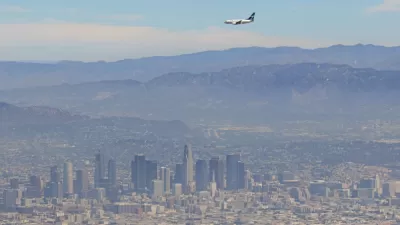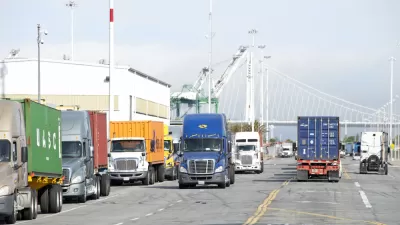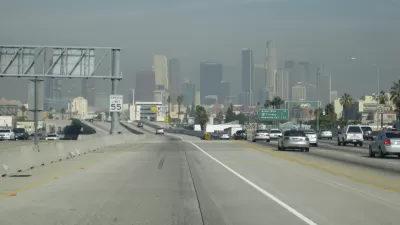Joanna Zelman reports on the good news and bad news contained in the American Lung Association's just released study, "State of the Air 2012." If you live in California, you may not want to read on.
Released Wednesday, the State of the Air report examined 2008-2010 ozone levels, the main ingredient of smog air pollution, and air-particle pollution at official measuring sites across the U.S.
Big picture, there was good news to be had. "Out of the 25 cities with the most ozone pollution, 22 saw improvements in air quality over last year's report. Similar advancements were seen among cities with the most year-round particle pollution," notes Zelman. Unfortunately, the good news didn't go much further. "More than 127 million Americans -- about 41 percent of the country -- still suffer from pollution levels that can make breathing dangerous."
In the rankings of the regions with the most year-round particle pollution, the first five of the top ten are all located in California, with 1) Bakersfield and Delano, 2) Hanford and Corcoran, and 3) Los Angeles, Long Beach, and Riverside, leading the list.
According to Zelman, "California regions face challenges due in part to the agricultural processes, weather and goods-movement industry there. The goods-movement industry includes everything from ships, trucks and trains to machines that load and unload freight and stock store shelves."
FULL STORY: State Of The Air 2012: American Lung Association Reports Improvements, Challenges

Alabama: Trump Terminates Settlements for Black Communities Harmed By Raw Sewage
Trump deemed the landmark civil rights agreement “illegal DEI and environmental justice policy.”

Planetizen Federal Action Tracker
A weekly monitor of how Trump’s orders and actions are impacting planners and planning in America.

The 120 Year Old Tiny Home Villages That Sheltered San Francisco’s Earthquake Refugees
More than a century ago, San Francisco mobilized to house thousands of residents displaced by the 1906 earthquake. Could their strategy offer a model for the present?

Ken Jennings Launches Transit Web Series
The Jeopardy champ wants you to ride public transit.

BLM To Rescind Public Lands Rule
The change will downgrade conservation, once again putting federal land at risk for mining and other extractive uses.

Indy Neighborhood Group Builds Temporary Multi-Use Path
Community members, aided in part by funding from the city, repurposed a vehicle lane to create a protected bike and pedestrian path for the summer season.
Urban Design for Planners 1: Software Tools
This six-course series explores essential urban design concepts using open source software and equips planners with the tools they need to participate fully in the urban design process.
Planning for Universal Design
Learn the tools for implementing Universal Design in planning regulations.
Clanton & Associates, Inc.
Jessamine County Fiscal Court
Institute for Housing and Urban Development Studies (IHS)
City of Grandview
Harvard GSD Executive Education
Toledo-Lucas County Plan Commissions
Salt Lake City
NYU Wagner Graduate School of Public Service





























